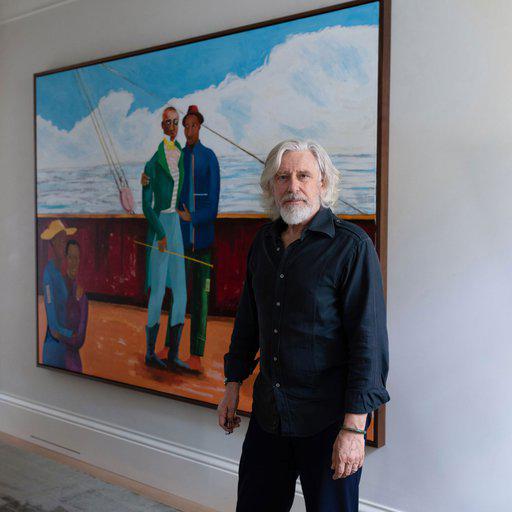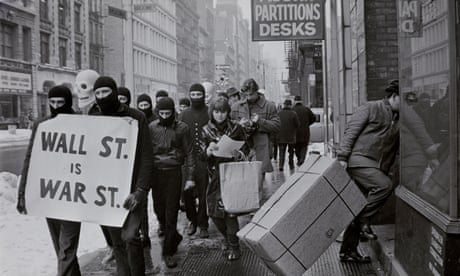Pause/Tanmpo
2009 - Film & Video (Film & Video)
3:45 minutes and 5:35 minutes (looped)
Bili Bidjocka
The short two-channel video Pause/Tanmpo takes its cue from a coincidental encounter artist Bili Bidjocka had in Dakar. Walking down the corniche, he saw a boxer, a Senefalese man, training at the beach. It immediately reminded the artist of Le Boxeur—the most well-known brand of matchsticks in Cameroon. On the matchbox is the image of a Black man in red, yellow, or green shorts with corresponding boxing gloves and with his hands ready to deliver an uppercut. This iconic image holds a space in the visual archive of every Cameroonian. The sheer elegance with which the boxer carried himself and the way he punched each molecule in the air caught Bidjocka’s attention and instigated him to begin filming the boxer as the sun set on the horizon of Dakar. After filming, Bidjocka switched sides from behind the camera and let himself be filmed as he tried to emulate, to reproduce the grace and grandeur of Le Boxeur. With this mirroring, Bidjocka’s work becomes a dialogue between two characters: one is a real boxer, and the other an impersonator. But it is also a trialogue between a real boxer, an impersonator, and the memory of Le Boxeur, who, though absent, is ever-present in the cultural memory. There is also a sense of comitragedy about the work: Bidjocka jokes about himself as “le fou” (the fool), desperately struggling to find the right gestures, in relation to the Senegalese boxer. The asynchronous loops of both channels in the video provoke an ever-changing choreography of comparison.
A visual artist and curator, Bili Bidjocka’s practice confronts market laws, history, and his own Cameroonian identity. Though trained in painting, Bidjocka found his formal fine arts education insufficient in its conception of what constitutes art. His practice expands on this training through mediums as varied as installation, sculpture, writing, and theatrical staging. Certain Cameroonian ceremonies and processions are integral to the artist’s process; these cultural traditions provide opportunities for Bidjocka to explore grief and desire through his work. His work often functions as riddles through which he continues the essential examination of the meaning and purpose of creation. Bidjocka co-founded the Parisian underground association Les Frigos, as well as co-founded and directed the Matrix Art Project in New York.
Colors:
Related works sharing similar palette

© » KADIST
Laura Henno
2016In 2009, Laura Henno began research in the archipelago Comoros for her first film Koropa the first episode of a triptych— completed in 2016...

© » KADIST
Douglas Gordon
2002Blind Spencer is part of the series “Blind Stars” including hundreds of works in which the artist cut out the eyes of Hollywood stars, in a symbolically violent manner...

© » MODERN MET PHOTOGRAPHY
People in the UK Can Be Prescribed Photography to Treat Mental Health Home / Science / Health People Can Be Prescribed “Photography” as a Mental Health Treatment in the UK By Margherita Cole on December 6, 2023 Photo: olhovyi_photographer/ Depositphotos Creative outlets like drawing and painting are great ways of exploring your emotions and relieving stress...

© » KADIST
Luisa Lambri
2007Rudolph Schindler’s designs, part of a practice he called “Space Architecture,” marry interior with exterior and space with light...

© » KADIST
Through her work, Daniela Ortiz (born in Peru in 1985) generates spaces of tension in which she explores concepts of nationality, racialization, social class and gender in order to understand how violence, persecution of racialized communities, inclusion and exclusion operate in occidental societies...
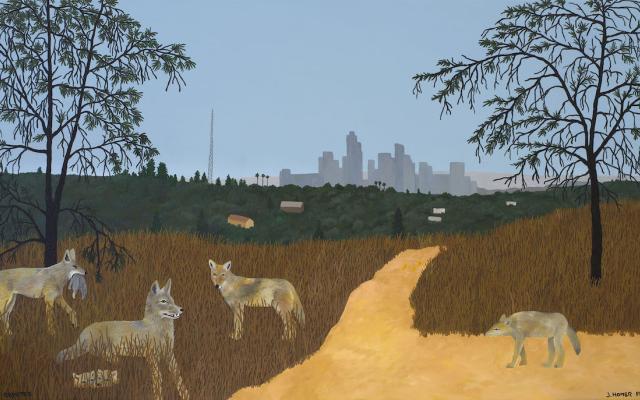
© » ART & OBJECT
10 Standout Works from the 2023 Hammer Biennial | Art & Object Skip to main content Subscribe to our free e-letter! Webform Your Email Address Role Art Collector/Enthusiast Artist Art World Professional Academic Country USA Afghanistan Albania Algeria American Samoa Andorra Angola Anguilla Antarctica Antigua & Barbuda Argentina Armenia Aruba Ascension Island Australia Austria Azerbaijan Bahamas Bahrain Bangladesh Barbados Belarus Belgium Belize Benin Bermuda Bhutan Bolivia Bosnia & Herzegovina Botswana Bouvet Island Brazil British Indian Ocean Territory British Virgin Islands Brunei Bulgaria Burkina Faso Burundi Cambodia Cameroon Canada Canary Islands Cape Verde Caribbean Netherlands Cayman Islands Central African Republic Ceuta & Melilla Chad Chile China Christmas Island Clipperton Island Cocos (Keeling) Islands Colombia Comoros Congo - Brazzaville Congo - Kinshasa Cook Islands Costa Rica Croatia Cuba Curaçao Cyprus Czechia Côte d’Ivoire Denmark Diego Garcia Djibouti Dominica Dominican Republic Ecuador Egypt El Salvador Equatorial Guinea Eritrea Estonia Eswatini Ethiopia Falkland Islands Faroe Islands Fiji Finland France French Guiana French Polynesia French Southern Territories Gabon Gambia Georgia Germany Ghana Gibraltar Greece Greenland Grenada Guadeloupe Guam Guatemala Guernsey Guinea Guinea-Bissau Guyana Haiti Heard & McDonald Islands Honduras Hong Kong SAR China Hungary Iceland India Indonesia Iran Iraq Ireland Isle of Man Israel Italy Jamaica Japan Jersey Jordan Kazakhstan Kenya Kiribati Kosovo Kuwait Kyrgyzstan Laos Latvia Lebanon Lesotho Liberia Libya Liechtenstein Lithuania Luxembourg Macao SAR China Madagascar Malawi Malaysia Maldives Mali Malta Marshall Islands Martinique Mauritania Mauritius Mayotte Mexico Micronesia Moldova Monaco Mongolia Montenegro Montserrat Morocco Mozambique Myanmar (Burma) Namibia Nauru Nepal Netherlands Netherlands Antilles New Caledonia New Zealand Nicaragua Niger Nigeria Niue Norfolk Island Northern Mariana Islands North Korea North Macedonia Norway Oman Outlying Oceania Pakistan Palau Palestinian Territories Panama Papua New Guinea Paraguay Peru Philippines Pitcairn Islands Poland Portugal Puerto Rico Qatar Romania Russia Rwanda Réunion Samoa San Marino Saudi Arabia Senegal Serbia Seychelles Sierra Leone Singapore Sint Maarten Slovakia Slovenia Solomon Islands Somalia South Africa South Georgia & South Sandwich Islands South Korea South Sudan Spain Sri Lanka St...

© » ARTS EQUATOR
How Local Government Supported The Arts Sector Amid COVID-19 Skip to content The arts and culture are vital to a nation – they provide numerous direct benefits to the state, such as creating jobs, generating tax revenues, attracting investments, and stimulating local economies via consumer purchases and tourism...

© » KADIST
Finger Pointing Worker
2011During Summer 2011, few months after the nuclear accident, performance artist Kota Takeuchi got a job at the Fukushima Daiichi plant and kept a blog about the labour conditions of clean-up workers...

© » GALERIE MAGAZINE
8 Emerging Artists Who Made a Splash at This Year’s NADA and Untitled Art in Miami - Galerie Subscribe Art + Culture Interiors Style + Design Emerging Artists Discoveries Artist Guide More Creative Minds Life Imitates Art Real estate Events Video Galerie House of Art and Design Subscribe About Press Advertising Contact Us Follow Galerie Sign up to receive our newsletter Subscribe Installation view of Henrik Godsk at Vigo Gallery at Untitled Art 2023...
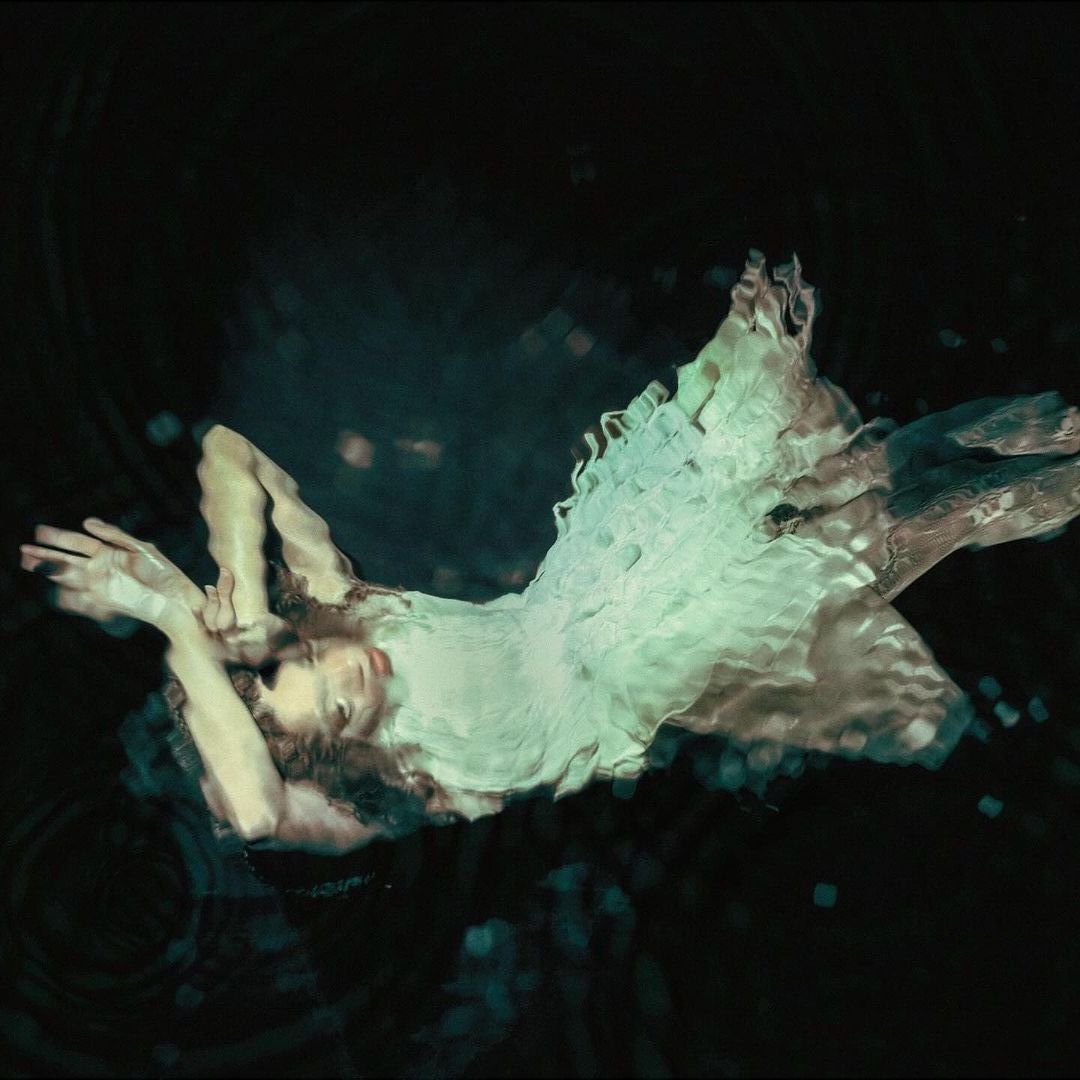
© » SOMETHING CURATED
Damsel Elysium Wonders, "If a Tree's Voice was Something We Could Understand, What Would it Say?" - Something Curated Copy Features Interviews Profiles Guides Jobs Interviews - 26 Jan 2024 - Share London based multi-instrumentalist, composer, experimental sound and visual artist, Damsel Elysium utilises double bass, violin, piano and original field recordings to explore intangible connections between humans and the natural world...

© » KADIST
Wong Wai Yin
2008In this work the artist stages a humorously violent “intervention” against male-dominated cultures of art production in present-day China...

© » KADIST
Abraham Oghobase
2018This series of photographs is inspired by the artist’s travels to Jos, Nigeria...

© » NYTIMES LENS
At 90, Photographer Fred Baldwin Still Has ‘So Much Work Left to Do’ - The New York Times Lens | At 90, Photographer Fred Baldwin Still Has ‘So Much Work Left to Do’ https://www.nytimes.com/2019/05/29/lens/fred-baldwin-photography.html Give this article Share Advertisement Continue reading the main story Fred Baldwin reckons he could have become a writer — if the manual Olivetti typewriter he used while studying at Columbia in 1955 had spell-check...
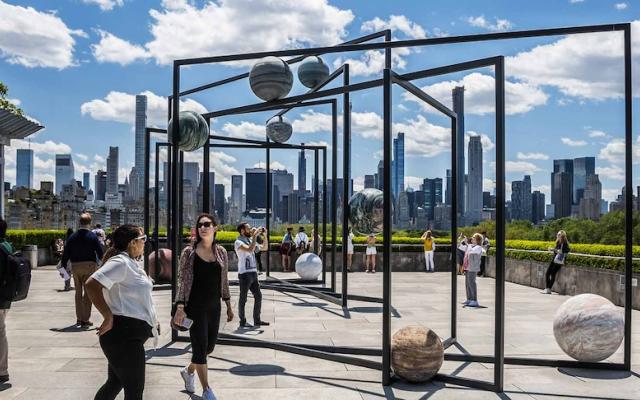
© » ART & OBJECT
Discover the Metropolitan Museum's 2024 Commissions | Art & Object Skip to main content Subscribe to our free e-letter! Webform Your Email Address Role Art Collector/Enthusiast Artist Art World Professional Academic Country USA Afghanistan Albania Algeria American Samoa Andorra Angola Anguilla Antarctica Antigua & Barbuda Argentina Armenia Aruba Ascension Island Australia Austria Azerbaijan Bahamas Bahrain Bangladesh Barbados Belarus Belgium Belize Benin Bermuda Bhutan Bolivia Bosnia & Herzegovina Botswana Bouvet Island Brazil British Indian Ocean Territory British Virgin Islands Brunei Bulgaria Burkina Faso Burundi Cambodia Cameroon Canada Canary Islands Cape Verde Caribbean Netherlands Cayman Islands Central African Republic Ceuta & Melilla Chad Chile China Christmas Island Clipperton Island Cocos (Keeling) Islands Colombia Comoros Congo - Brazzaville Congo - Kinshasa Cook Islands Costa Rica Croatia Cuba Curaçao Cyprus Czechia Côte d’Ivoire Denmark Diego Garcia Djibouti Dominica Dominican Republic Ecuador Egypt El Salvador Equatorial Guinea Eritrea Estonia Eswatini Ethiopia Falkland Islands Faroe Islands Fiji Finland France French Guiana French Polynesia French Southern Territories Gabon Gambia Georgia Germany Ghana Gibraltar Greece Greenland Grenada Guadeloupe Guam Guatemala Guernsey Guinea Guinea-Bissau Guyana Haiti Heard & McDonald Islands Honduras Hong Kong SAR China Hungary Iceland India Indonesia Iran Iraq Ireland Isle of Man Israel Italy Jamaica Japan Jersey Jordan Kazakhstan Kenya Kiribati Kosovo Kuwait Kyrgyzstan Laos Latvia Lebanon Lesotho Liberia Libya Liechtenstein Lithuania Luxembourg Macao SAR China Madagascar Malawi Malaysia Maldives Mali Malta Marshall Islands Martinique Mauritania Mauritius Mayotte Mexico Micronesia Moldova Monaco Mongolia Montenegro Montserrat Morocco Mozambique Myanmar (Burma) Namibia Nauru Nepal Netherlands Netherlands Antilles New Caledonia New Zealand Nicaragua Niger Nigeria Niue Norfolk Island Northern Mariana Islands North Korea North Macedonia Norway Oman Outlying Oceania Pakistan Palau Palestinian Territories Panama Papua New Guinea Paraguay Peru Philippines Pitcairn Islands Poland Portugal Puerto Rico Qatar Romania Russia Rwanda Réunion Samoa San Marino Saudi Arabia Senegal Serbia Seychelles Sierra Leone Singapore Sint Maarten Slovakia Slovenia Solomon Islands Somalia South Africa South Georgia & South Sandwich Islands South Korea South Sudan Spain Sri Lanka St...

